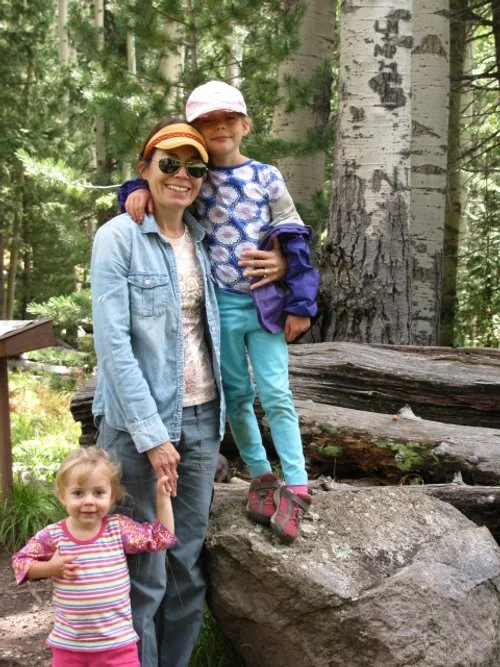A New Way To See
Taken in 2013 back when we hiked much shorter distances but they needed Matt and I in a completely different and more straight forward way.
Heading back to school has been especially daunting for my 17-year-old daughter, who is neurodivergent. She had a spectacular summer full of her favorite activities: performing in local theater, rowing a boat in the Grand Canyon, attending Broadway musicals, then painting, drawing and writing about her experiences.
So waking up to her first day of senior year at a college prep school, where she’s surrounded by over achievers applying early decision, brought her dreamy summer to a cataclysmic halt, one that landed us on the couch of a family counselor.
It was only then she shared something that’s been weighing heavily on her heart and mind: that she’s not ready to make such a big decision as college, that she might want to take a gap year.
I have long supported the idea of a gap year. When I was 17, I had absolutely NO CLUE what I wanted to study and only chose a college based on how pretty it seemed and went because that’s what most kids from my high school did and my parents could afford to send me. It was a very dark period of shame and guilt – the not knowing. I wound up with an ulcer by sophomore year. It’s no wonder one third of undergraduates in the U.S. drop out each year, sometimes without even telling their parents.
But somehow I hadn’t shared all this with my daughter. Instead my husband and I launched into the college tours like it was our new job, creating a spreadsheet with all her variables, reading books and visiting 10 schools over the last two years, and that’s not counting all the dizzying virtual tours we sat through. Her dad and I got carried away living vicariously, what we would’ve done then with what we know now.
But the thing is, she doesn’t know yet.
And I’m so glad she’s told us! In the United States college costs on average between $20,000 and $62,000 a year. And 70% of graduates have student debt. Shouldn’t a kid have a better idea of what they want to study before making that kind of investment?
If only the U.S. was more like Australia, the U.K. and New Zealand, countries that have established cultural and educational infrastructure that supports taking time off for work, travel or skill building.
Now her dad and I are trying to support her the best way we know how without our own fears getting in the way. That’s how I wound up writing this poem in an attempt to better understand her.
The rigid world functions on one plane from A to B to C.
But you, my love, soar above taking it all in at once.
Swooping down to dive for sea urchins, sparkly beetles and feathered things, loving each creature as if it were your sister because it belongs to the same universe you do.
Your heart aches for the robin that careened into our window so you gave it a proper burial when others watched with tilted heads.
The rigid ones and all their sharp angles worship clocks and shout, “you’re late,” making you feel anxious and wrong somehow.
But it’s the ones who soar, like you, who see what others cannot.
They envision and create and invent.
The Albert Einsteins, the Emily Dickinsons, the Michelangelos, and the Florence Welches.
Your brain is a wondrous, beautiful thing to be admired and cherished.
If the rigid ones can’t appreciate it now, that’s only because we lack the gifts you have.
Some day we’ll wake up and thank you for showing us a new way to see.

